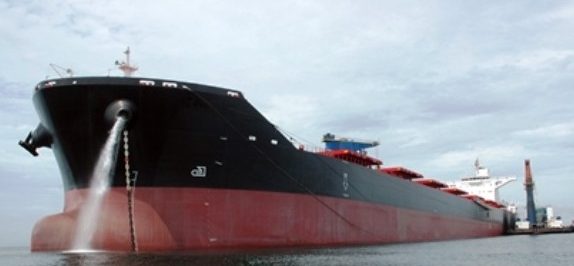The Coast Guard Marine Safety Center (MSC) has denied requests from four ballast water treatment system manufacturers to use an alternative testing method for Coast Guard type approval of their ultra-violet (UV) based ballast water management systems (BWMS).
All four appealed the MSC’s decision. All four requested that the Coast Guard consider an MPN-based method as equivalent to the required testing procedure. On July 12, 2016, the Coast Guard issued final agency action denying these appeals.
The four UV manufacturers utilized a test approach called the “Most Probable Number” (MPN) method, an alternative method that evaluates the likelihood of reproduction among organisms. The initial MSC review concluded that the requested MPN test method does not meet the requirements for an alternative method stipulated in the regulation.
The appeal packages submitted by all four manufacturers were thoroughly reviewed by theDirectorate of Commercial Regulations and Standards for legal and technical merits. On July 12, 2016, Deputy Commandant for Operations, Policy and Capabilities Rear Adm. Linda Fagan denied the appeals and upheld MSC’s refusal to approve their use of an MPN-based method as a measurement approach. This denial is final agency action.
In making this final determination, the Coast Guard reviewed over 20,000 pages of material submitted in the appeals. The Coast Guard also reviewed an independent analysis of the proposed MPN-based method, prepared by the Naval Research Laboratory, which concluded that the proposed alternative is not equivalent to the requirements.
The appeals were denied on the grounds that MSC lacked the discretion to approve a testing alternative that would change the discharge standard. In addition, the manufacturers were not able to show that their systems met the regulatory requirements for approval of an alternative test.
MPN-based methods continue to be a highly-debated practice with regard to ballast water systems. MPN was developed to estimate numbers of cells of a single species with well-known culturing (or growth) requirements. With regards to evaluating ballast water that has thousands of different kinds of species, MPN-based methods have not been validated to date for this purpose.
The use of an MPN-based method to evaluate mixed assemblages of organisms in ballast water is being considered by the Environmental Protection Agency’s Environmental Technology Verification (ETV) technical panel. They have not yet reached a determination.
If the panel finds an MPN method to be acceptable for ballast water, the new version of the ETV protocol will need to be incorporated by reference into the Coast Guard’s regulations with a new rulemaking, via the public notice and comment process. The Coast Guard’s decision on measuring viability was established through this process when the ballast water discharge standard was established and, at a minimum, would need to again go through this process for any change.
This decision is not a denial of UV systems or of MPN; it is a denial of the proposed alternative testing method by four UV system manufacturers. In fact, there are several UV-based BWMS going through Coast Guard type approval testing right now under the required test procedures.
This denial does not adversely affect the 20 BWMS manufacturers currently involved in testing for Coast Guard approval using testing standards published in Coast Guard regulations.
This denial also has no immediate impact on shipping. These UV systems are still accepted for use by the Coast Guard as Alternate Management Systems (AMS). U.S. regulations allow ships to use AMS for five years from their compliance date. Ship owners and operators can also still continue to apply for, and receive, extensions to their compliance dates.
The Coast Guard is working with the International Maritime Organization (IMO) to harmonize international testing procedures, known as the G8 Guidelines, with U.S. type-approval processes. The IMO type-approval guidelines are currently under review, and recommendations for revisions are being developed for the Marine Environmental Protection Committee (MEPC 70) meeting in October 2016.
Ultimately, the BWM Convention is not a treaty of the United States, and the Coast Guard has a mandate to implement U.S. laws as written.
Please click below to view USCG’s denial letters in the appeals of the four ballast water management system (BWMS) manufacturers. In addition, the document includes a 64-page test report from the Naval Research Laboratory.
Source: USCG































































